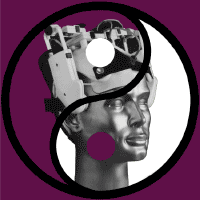Topic Menu
► Topic MenuTopic Editors



Plant Extracts and Their Therapeutic Effects
Topic Information
Dear Colleagues,
Throughout history, drugs or medicinal preparations obtained from plant extracts have been widely used as curative remedies, often being used under the criteria of intuition and the mere repetition of experience. In contemporary times, these criteria have been replaced by in-depth scientific studies that allow the application of these plant extracts to be much more effective through knowledge of the specific phytochemicals with different health benefits that are naturally found in small amounts in plants. In recent years, the study of these phytochemicals has been one of the main activities for the development of functional foods, nutraceuticals and cosmeceuticals, finding that the use of plant extracts provides bioactive properties and beneficial effects. However, bioactive compounds vary widely in their chemical structure and function, which continues to pose some scientific challenges to increase the scientific evidence for such properties. In this sense, the present Special Issue covers a selection of recent research topics and current review articles related to the use of "green" extraction processes to extract bioactive compounds from plant matrices or plant by-products, their characterization via advanced separative techniques, as well as the evaluation, both in vitro and in vivo, of bioactivity against different pathologies related to obesity, anti-aging, neuroprotection, cancer, among others.
Prof. Dr. David Arráez-Román
Dr. María De La Luz Cádiz-Gurrea
Dr. Álvaro Fernández Ochoa
Topic Editors
Keywords
- plants and plant sub-products
- extraction processes, mainly “green” technologies
- advanced analytical techniques coupled to different detection systems
- bioactivity evaluation
- therapeutic effects
- dietary intervention studies
- bioavailability and metabolism studies
- omics studies (metabolomics, microbiomics, etc.)
Participating Journals
| Journal Name | Impact Factor | CiteScore | Launched Year | First Decision (median) | APC |
|---|---|---|---|---|---|

Antioxidants
|
7.0 | 8.8 | 2012 | 13.9 Days | CHF 2900 |

Life
|
3.2 | 2.7 | 2011 | 17.5 Days | CHF 2600 |

Medicines
|
- | - | 2014 | 32.6 Days | CHF 1400 |

Molecules
|
4.6 | 6.7 | 1996 | 14.6 Days | CHF 2700 |

Plants
|
4.5 | 5.4 | 2012 | 15.3 Days | CHF 2700 |

MDPI Topics is cooperating with Preprints.org and has built a direct connection between MDPI journals and Preprints.org. Authors are encouraged to enjoy the benefits by posting a preprint at Preprints.org prior to publication:
- Immediately share your ideas ahead of publication and establish your research priority;
- Protect your idea from being stolen with this time-stamped preprint article;
- Enhance the exposure and impact of your research;
- Receive feedback from your peers in advance;
- Have it indexed in Web of Science (Preprint Citation Index), Google Scholar, Crossref, SHARE, PrePubMed, Scilit and Europe PMC.

